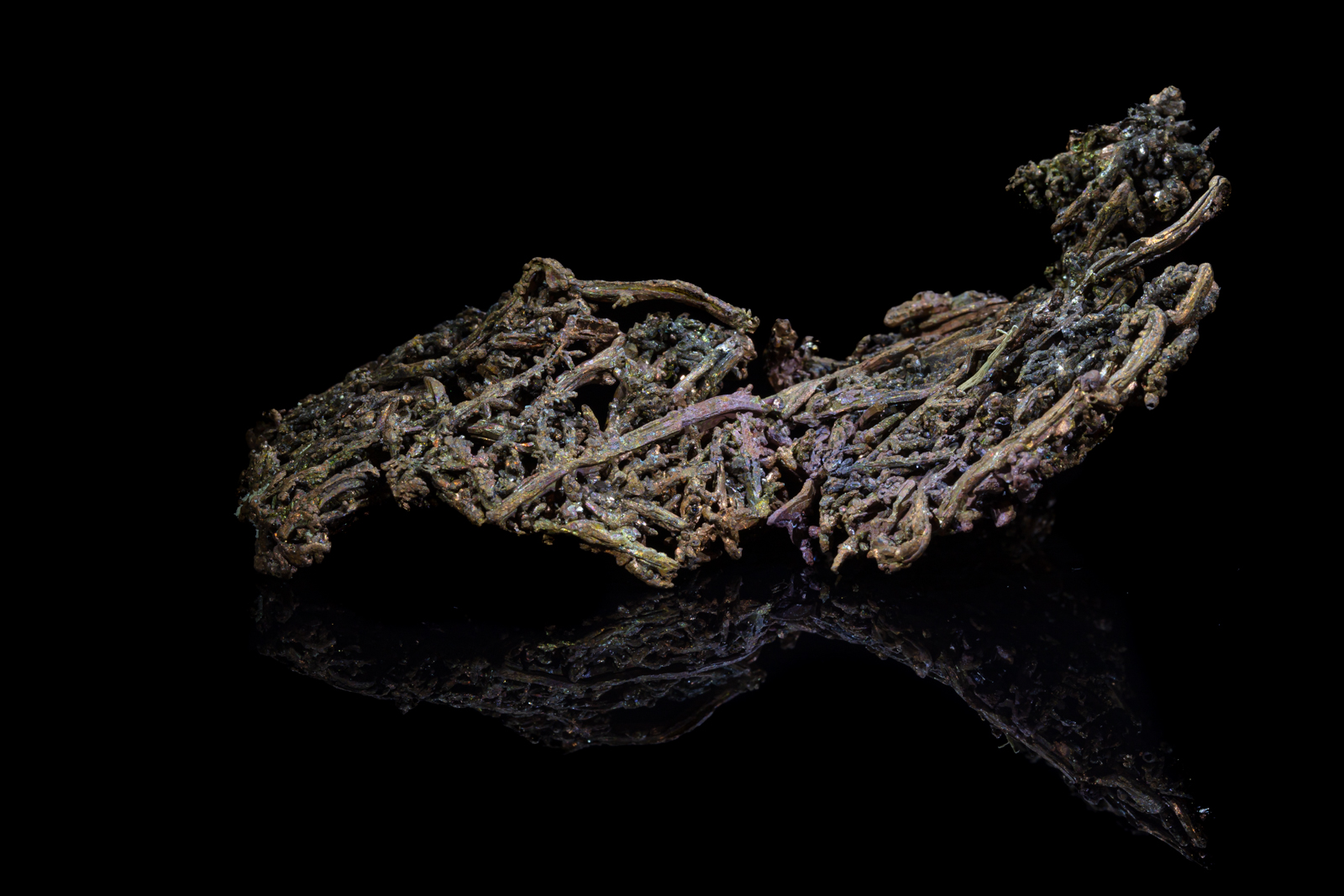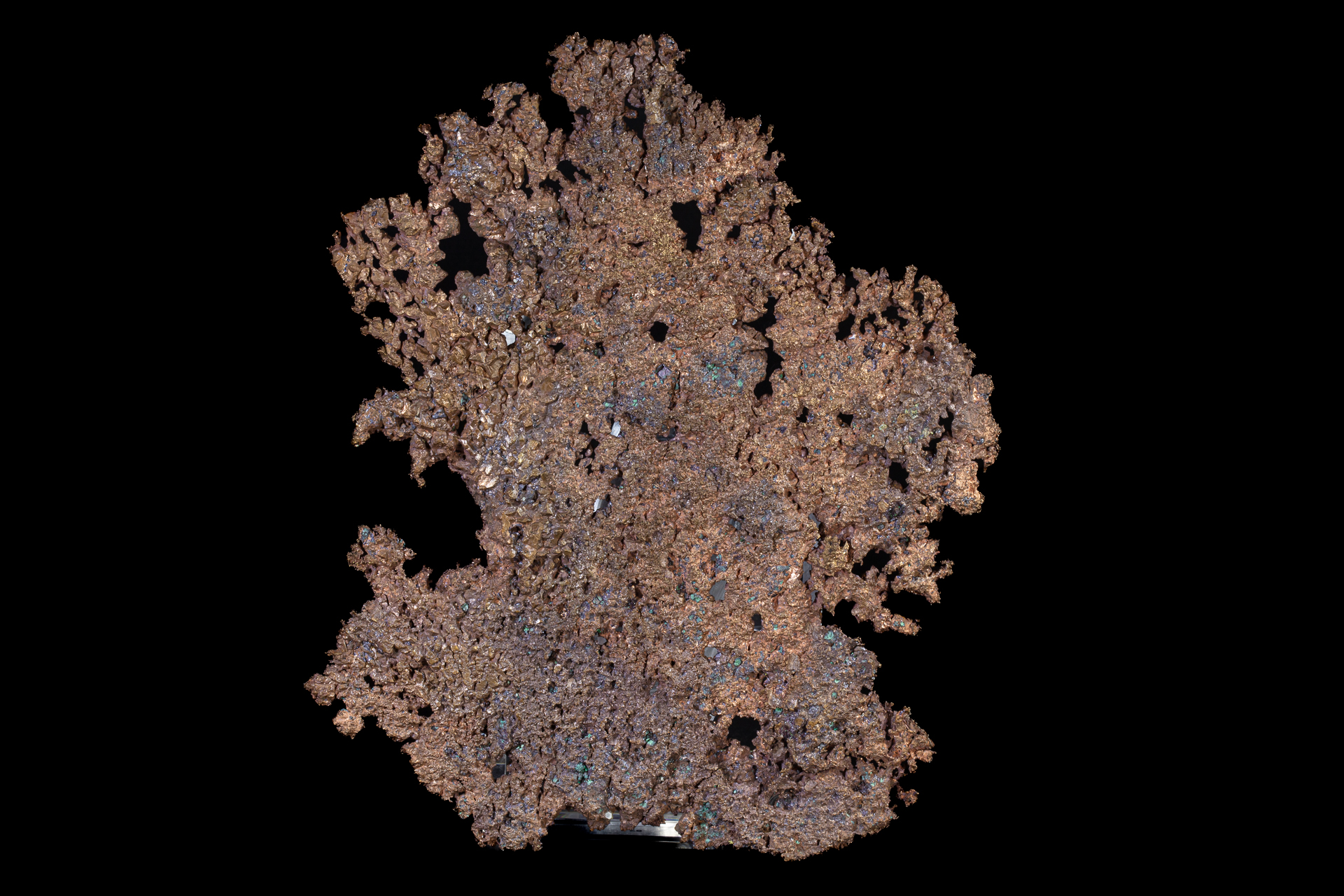Copper
Formula: Cu
Species: Native Elements
Colour: Copper-red. Tarnishes to black or green in air.
Lustre: Metallic
Hardness: 2½ – 3
Specific Gravity: 8.94 – 8.95
Crystal System: Isometric
Member of: Copper Group
Name: From Greek “kyprios”, of Cyprus, the location of ancient copper mines; from the latin aes cyprium, meaning “metal of Cyprus”, shortened to cyprium and later corrupted to cuprum.
Copper was one of the first metals to be worked into implements and the first metal to be smelted from ores. Its excellent ductility and high conductivity assure its use in modern society.
Copper in its naturally occurring free metallic state was probably the first metal to be used by humans. Neolithic people used copper as a substitute for stone by 8000 BC. It was first cast in molds by the Egyptians in about 4000 BC and was alloyed with tin to produce bronze in around 3500 BC. Copper in industrial quantities is usually found in massive aggregates, some weighing up to several tons. When well crystallized, it is found in cubic or dodecahedral crystals, often arranged in treelike shapes. Native copper seems to be a secondary mineral, a result of the reduction of copper-bearing solutions by iron-bearing minerals. The Keweenaw Peninsula of Michigan has probably the world’s largest concentration of native copper.

 Copyright Charles Camarda - www.camardavisualstudio.com
Copyright Charles Camarda - www.camardavisualstudio.com

 Copyright Charles Camarda - www.camardavisualstudio.com
Copyright Charles Camarda - www.camardavisualstudio.com